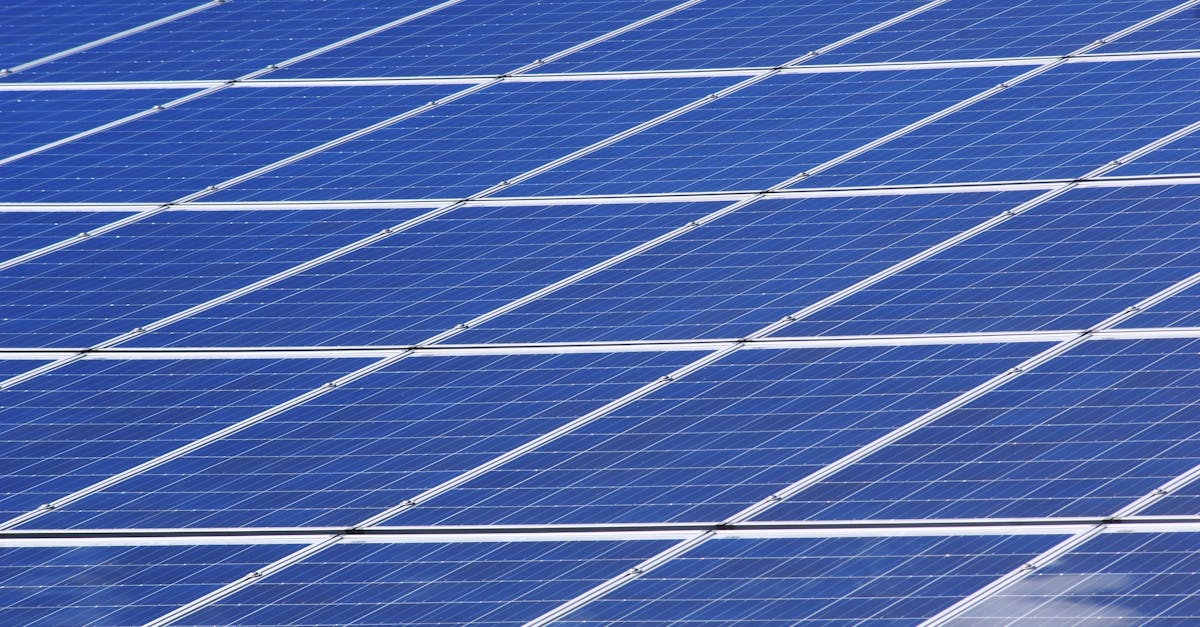Illuminating Tomorrow: Embracing Solar Lights for Sustainable Savings

Welcome to the world of solar lights, where sustainability meets cost-efficiency. In our journey toward a greener future, it’s essential to understand the power of solar lights in transforming the way we illuminate our surroundings. These innovative devices not only harness the abundant energy of the sun but also significantly reduce our energy bills, bringing us a step closer to a more sustainable lifestyle. This comprehensive guide will walk you through the fundamental workings of solar lights, aid you in choosing the right fit for your needs, and provide insights into installation, maintenance, as well as the compelling financial and environmental benefits that come with embracing solar lighting technology. Additionally, we will delve into the future of solar lighting, exploring the latest innovations and their potential impact on our quest for a more energy-efficient and eco-conscious world.
1. Understanding Solar Lights
Thank you for reading this post, don't forget to subscribe!
Welcome to the enlightening world of solar lights, where we uncover the magic of turning sunlight into sustainable energy savings. Understanding solar lights goes beyond their technical aspects; it’s about embracing a brighter, more efficient future. These ingenious devices absorb sunlight and convert it into energy, offering not just a practical lighting solution but a conscious step towards reducing energy bills sustainably. As you delve into the world of solar lights, you’ll realize the myriad benefits they bring. From reducing environmental impact to cutting down on electricity expenses, they offer a compelling reason to make the switch. By truly comprehending the basics of solar lights, you equip yourself with the knowledge to make an informed, sustainable, and cost-effective choice.
How Solar Lights Work
Discovering how solar lights work unveils the captivating principles behind harnessing the sun’s energy to power our everyday lighting needs. These innovative lights operate through photovoltaic cells, which soak up sunlight and convert it into electricity, a process called the photovoltaic effect. As light particles, known as photons, strike the solar panel, they dislodge electrons, creating an electric current. This current is then stored in a rechargeable battery, ensuring a constant power supply, even during low-light periods. This mechanism not only provides a sustainable energy source but also demonstrates an incredible way to reduce reliance on traditional power grids. Understanding the intricacies of solar lights empowers us to embrace a more self-sufficient and environmentally conscious approach to lighting.
Advantages of Solar Lights
Embracing solar lights brings forth a multitude of advantages, accentuating the positive impact they have on both our wallets and the environment. First and foremost, solar lights offer significant cost savings. By harnessing the sun’s energy, these lights drastically reduce electricity bills, providing a sustainable, long-term solution for lighting needs. Moreover, their installation often comes with low maintenance costs, making them an economically sound choice. Beyond financial benefits, the environmental impact of solar lights is profound. By relying on renewable solar energy, these lights contribute to lowering carbon emissions, thus playing a vital role in mitigating climate change and reducing reliance on non-renewable energy sources. Understanding the myriad advantages of solar lights not only highlights their practical benefits but also underscores their crucial role in fostering a more sustainable and eco-friendly lifestyle.
2. Choosing the Right Solar Lights

Choosing the right solar lights involves a thoughtful consideration of various factors to ensure they align perfectly with your specific energy-saving requirements. One crucial aspect to ponder is brightness. Understanding the intended use and the desired level of illumination helps in selecting solar lights that offer the right amount of brightness for your outdoor or indoor spaces. Additionally, durability plays a significant role in the selection process. Opting for lights built with weather-resistant materials ensures longevity, making them a reliable and sustainable choice. Efficiency is equally important; selecting solar lights equipped with modern, high-efficiency solar panels maximizes energy absorption, further enhancing overall performance and cost-effectiveness. As you navigate through the various types available, such as path lights, spotlights, or string lights, it’s essential to envision how each type fits within your energy-saving landscape to make an informed and beneficial choice.
Factors to Consider
When considering solar lights, several key factors warrant attention to ensure you make the most suitable choice for your needs. First and foremost, brightness plays a pivotal role. Understanding the intended usage scenario will guide you in selecting solar lights with the appropriate brightness level, providing the perfect atmosphere for your outdoor or indoor space. Simultaneously, durability is essential, especially for outdoor lighting. Selecting lights constructed with rugged, weather-resistant materials ensures long-term reliability, making them a sustainable and cost-effective choice. Efficiency also remains a critical factor. Opting for solar lights equipped with modern, high-efficiency solar panels enhances energy absorption, ensuring optimal performance while contributing to overall energy savings. By considering these factors, you position yourself to make an informed decision, selecting solar lights that not only suit your energy-saving needs but also align with your commitment to sustainability and eco-friendly practices.
Types of Solar Lights
Diving into the world of solar lights reveals a myriad of options, each designed to cater to specific lighting needs and applications. Path lights, ideal for illuminating walkways and garden paths, offer a subtle, ambient glow, enhancing both safety and aesthetics in outdoor spaces. For those seeking to accentuate specific areas, spotlights provide a focused, powerful beam, perfect for highlighting landscaping features, architectural elements, or signs. String lights, on the other hand, offer a versatile solution for creating a charming, festive ambiance, whether for seasonal decorations or year-round outdoor entertaining. Solar-powered security lights stand as beacons of safety, offering motion-activated illumination to deter intruders and provide added peace of mind. Understanding the diverse types of solar lights empowers you to curate a personalized lighting landscape, tailored to your specific needs and preferences while harnessing the power of sustainable energy.
3. Installation and Maintenance
Installing and maintaining solar lights is a rewarding endeavor that not only contributes to optimal energy bill reduction but also adds to the overall sustainability of your living space. When installing solar lights, placement is crucial; ensure they are strategically positioned to receive maximum sunlight exposure throughout the day, which enhances their efficiency. It’s important to periodically clean the solar panels to remove dirt and debris, allowing them to effectively harness sunlight. Additionally, consider replacing rechargeable batteries every 1-2 years to maintain peak performance. Regular maintenance involves inspecting the fixture for any signs of wear, like cracked casings or water ingress, and promptly addressing any issues to ensure their longevity and effectiveness. By following these simple tips, you can enjoy the full benefits of your solar lights and contribute to a more eco-friendly and cost-efficient lifestyle.
Proper Installation Techniques
Proper installation of solar lights is key to ensuring their maximum efficiency and longevity. The first step in the installation process is determining the right location for the lights. Select areas that receive ample sunlight throughout the day, allowing the solar panels to harness as much energy as possible. When securing the lights, make sure they are positioned to illuminate the desired area while avoiding obstruction from surrounding plants or structures. It’s crucial to follow the manufacturer’s guidelines to optimize the performance of the solar lights, which may involve specific mounting heights or angles for the solar panels. Additionally, ensure that the solar panels are kept clean and free from debris, as this directly impacts their ability to convert sunlight into energy. By adhering to these proper installation techniques, you not only maximize the efficiency of your solar lights but also contribute to a more sustainable and energy-efficient lifestyle.
Maintenance Guidelines
Maintaining solar lights ensures their longevity and sustained efficiency, offering continuous energy bill reduction while contributing to a greener, more sustainable environment. Regular maintenance involves inspecting the lights for any accumulated debris or dirt, ensuring that the solar panels can effectively absorb sunlight. Clean the panels periodically to remove any residue that might hinder their performance. Additionally, check the fixtures for signs of wear, such as cracks or water ingress, and promptly address any issues to maintain their effectiveness. Part of the maintenance process includes replacing rechargeable batteries every 1-2 years to ensure optimal performance. By carrying out these simple maintenance tasks, you not only keep your solar lights functioning effectively but also actively contribute to a more energy-efficient and eco-friendly lifestyle.
4. Financial and Environmental Benefits

Embracing the use of solar lights brings forth a host of financial and environmental advantages, positioning them as a sustainable and cost-effective lighting solution. One of the most apparent benefits is the significant cost savings achieved through reduced reliance on traditional energy sources. By harnessing solar energy, these lights effectively lower electricity bills, offering a long-term, sustainable lighting option that minimizes ongoing expenses. Moreover, the environmental impact of solar lights is commendable. By utilizing renewable energy, they contribute to diminishing carbon footprints and aid in the reduction of greenhouse gas emissions, actively fostering a more sustainable ecosystem. From reduced energy bills to a positive environmental footprint, the use of solar lights underscores a compelling case for their widespread adoption, aligning not only with individual cost-saving efforts but also with global sustainability goals.
Cost Savings Analysis
The utilization of solar lights presents an excellent opportunity for substantial cost savings on energy bills, making them a long-term, financially beneficial choice. By opting for solar-powered lighting solutions, individuals and organizations can significantly reduce their dependence on conventional grid-based electricity, resulting in noticeable reductions in monthly utility expenses. Over time, these savings accumulate, providing a compelling incentive for embracing sustainable illumination. In addition to immediate financial benefits, considering the long-term advantages further highlights the value of solar lights. Their minimal operational costs and reduced maintenance requirements contribute to ongoing financial savings, reinforcing the economic viability of this renewable energy solution. By understanding the potential cost savings associated with solar lights, individuals and businesses can make informed decisions that prioritize both fiscal prudence and environmental mindfulness, fostering a sustainable and financially advantageous approach to lighting needs.
Environmental Impact
The adoption of solar lights goes beyond tangible cost savings, as it significantly contributes to a positive environmental impact, reflecting an active commitment to sustainability. By harnessing the renewable energy of the sun, solar lights directly reduce reliance on non-renewable energy sources, subsequently minimizing the carbon footprint and lessening the strain on the environment. This transformative shift towards clean, renewable energy serves as an exemplary model for responsible resource consumption and environmental stewardship. Additionally, solar lights play a crucial role in mitigating the adverse effects of climate change by curbing greenhouse gas emissions, further advancing the collective effort to preserve the planet’s ecological balance. Understanding the positive environmental impact of using solar lights illustrates their broader significance beyond individual utility, encapsulating an ethos of responsible energy consumption and ecological preservation that benefits both current and future generations.
5. Future of Solar Lighting
The future of solar lighting is bright, marked by continual advancements that promise to revolutionize the way we illuminate our surroundings. Technological innovations in solar lighting are driving remarkable progress, introducing enhanced energy storage systems and more efficient photovoltaic cells that maximize energy absorption. These developments pave the way for brighter and longer-lasting illumination, ensuring that solar lighting remains a reliable and sustainable choice for diverse applications. Additionally, advancements in design and materials are expanding the adaptability of solar lights, making them increasingly versatile and seamlessly integrable into various environments. As solar lighting technology continues to evolve, a growing focus on smart lighting systems and interconnected networks is reshaping the landscape of sustainable illumination. The integration of intelligent controls and monitoring capabilities not only optimizes energy usage but also enhances the overall user experience. Embracing the future of solar lighting promises not only continued energy efficiency and environmental benefits but also a seamless and intuitive lighting solution that transcends traditional boundaries.
Technological Innovations
The realm of solar lighting is witnessing an exciting wave of technological innovations that are shaping the future of sustainable illumination. Advancements in energy storage are amplifying the reliability and longevity of solar lighting systems. Cutting-edge battery technologies, including improved lithium-ion and solid-state batteries, are revolutionizing energy storage, enabling solar lights to operate efficiently even in low-light conditions while ensuring extended durability. Moreover, the evolution of more sophisticated and high-performance photovoltaic cells is enhancing energy absorption, amplifying the overall efficiency of solar lighting. These advancements lead to improved output, extending the reach and applicability of solar lighting solutions across a diverse range of settings. Furthermore, the integration of smart technologies and IoT capabilities is fostering a new era of interconnected, intelligent solar lighting systems. By enabling remote monitoring, adaptive controls, and data-driven energy management, these innovations are streamlining energy usage and bolstering the sustainable impact of solar lighting. With these remarkable technological strides, solar lighting is positioned to not only optimize energy efficiency but also reshape the future of sustainable illumination with unparalleled reliability and adaptability.
Sustainable Living Trends
Solar lighting stands at the forefront of sustainable living trends, seamlessly aligning with the growing global movement towards eco-friendly practices. As sustainable living becomes an increasingly integral aspect of modern lifestyles, solar lighting serves as a versatile and accessible means to embrace environmentally conscious solutions. By harnessing the renewable energy of the sun to illuminate homes, public spaces, and commercial environments, solar lighting exemplifies the confluence of practicality and sustainability. This growing trend reflects a collective recognition of the importance of reducing environmental impact and fostering resource efficiency. As more individuals and communities embrace the ethos of sustainable living, the adoption of solar lighting continues to gain traction, symbolizing a conscious shift towards energy-efficient, eco-friendly alternatives. With its emphasis on renewable energy and reduced reliance on grid-based electricity, solar lighting represents not only a practical lighting solution but also a powerful symbol of progress towards a more sustainable and environmentally mindful future.
Quiz
- How do solar lights contribute to sustainable living?
- a) By using traditional energy sources
- b) By optimizing energy savings and reducing environmental impact
- c) By increasing reliance on non-renewable energy
- d) By contributing to increased carbon emissions
- What are some technological innovations in solar lighting discussed in the article?
- a) Increased reliance on non-renewable energy sources
- b) Integration of smart technologies and IoT capabilities
- c) Reduced efficiency of solar panels
- d) No advancements in energy storage systems
- True or False: Solar lights have no impact on reducing energy bills.
- a) True
- b) False
- Which of the following is NOT a type of solar light discussed in the article?
- a) Path lights
- b) String lights
- c) Sound lights
- d) Security lights
- b
- b
- b
- c




